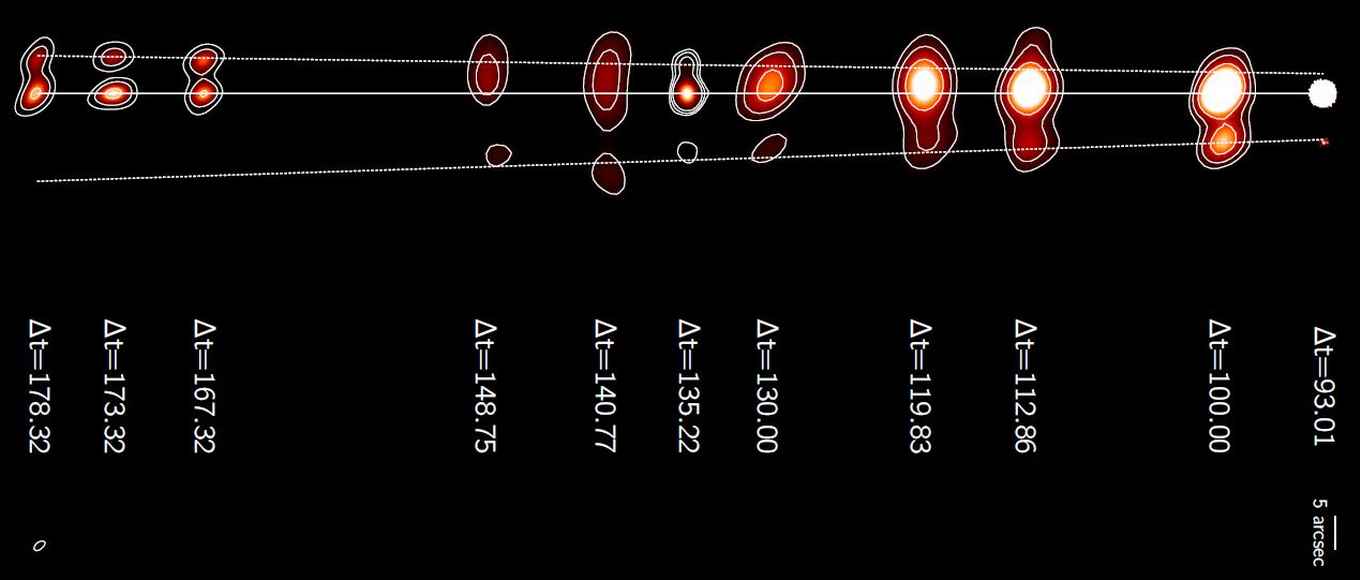Extremely powerful long-lived superluminal ejection from black hole MAXI J1820+070
3 March 2020

The astronomers Antonia Rowlinson (University of Amsterdam/ASTRON) and Ralph Wijers (University of Amsterdam) took part in the research. The results are published in Nature Astronomy.
Astronomers report radio observations of the black hole transient MAXI J1820+070 during its 2018 outburst. As the black hole transitioned from the hard to soft state, we observed an isolated radio flare, which, using high-angular-resolution radio observations, we connect with the launch of bipolar relativistic ejecta.
This flare occurs as the radio emission of the core jet is suppressed by a factor of over 800. We monitor the evolution of the ejecta over 200 days and to a maximum separation of 10″, during which period it remains detectable due to in situ particle acceleration.
Using simultaneous radio observations sensitive to different angular scales, we calculate an accurate estimate of energy content of the approaching ejection. This energy estimate is far larger than that derived from the state transition radio flare, suggesting a systematic underestimate of jet energetics.